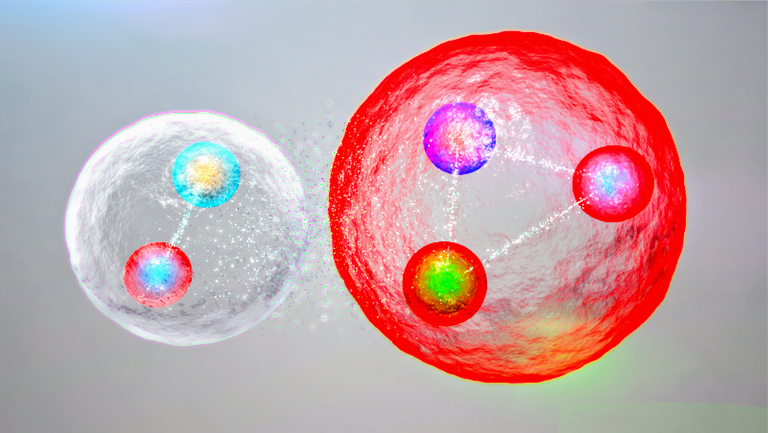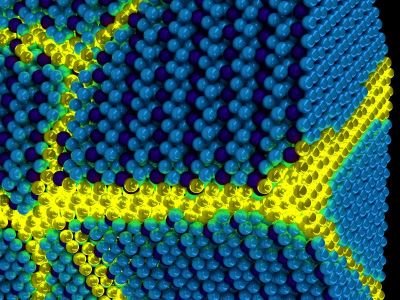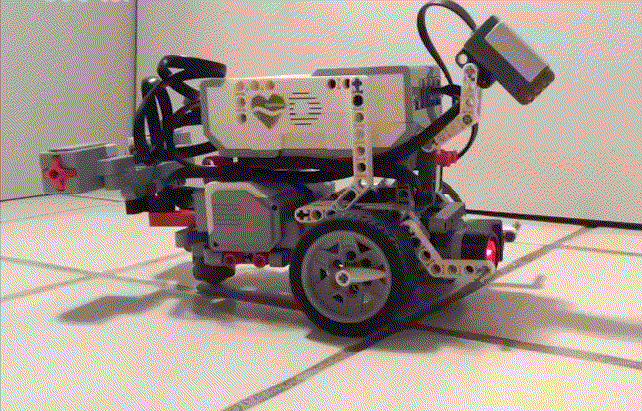Physicists just discovered another type of matter named Excitonium.
(Caption Image credit: CERN)
Excitonium was first theorized about 50 years ago when Harvard Theoretical Physicist Prof. Bert Halperin came up with the idea in 1960s to which he said "If our understanding of quantum mechanics is correct, excitonium has to exist."
(Harvard Theoretical Physicist Prof. Bert Halperin Image credit: Harvard)
Ever since Excitonium was theorized proving it's existence was extremely hard as scientists didn't had the right techniques to distinguish between Excitonium and another similar type of matter called Peierls phase.
The way to prove it's existence was to know and prove all about how the electron moves around the nucleas of the atom.
(Peter Abbamonte (center) with graduate students Anshul Kogar (right) and Mindy Rak (left) at the Frederick Seitz Materials Research Laboratory. Photo by L. Brian Stauffer)
The research was conducted by Peter Abbamonte from the University of Illinois working with the graduate students Anshul Kogar and Mindy Rak.
(Artist’s depiction of the collective excitons of an excitonic solid. These excitations can be thought of as propagating domain walls (yellow) in an otherwise ordered solid exciton background (blue). Image credit: Peter Abbamonte, University of Illinois)
Excitonium is a collection of particles that can exhibit quantum phenomenas like superconductivity, superfluidity or insulator on a macroscopic level. The group of particles that makes up excitonium are called excitons which are bosons the type of particles like photon, gluon, higgs boson.
GIF showing the process of how exciton forms (GIF credit: Seeker)
Excitons are composite particles which is some particle made of two or more elementary particles. With Excitons it's a bit different, they’re made of an electron that has jumped to a higher energy level from the outermost shell of an atom with lots of other electrons and the shell of electrons with an escaped electron the empty space is behaved like a positive charged particle or like a positive hole, then the positive hole attracts the escaped electron back to it's place, when the two charges the positive charged hole and the electron meet they are an exciton.
You might like to read my previous articles on How Scientists Upload A Worm's Brain Into A Robot
How There's Clean Water on Mars!



Peace, Abundance, and Liberty Network (PALnet) Discord Channel. It's a completely public and open space to all members of the Steemit community who voluntarily choose to be there.Congratulations! This post has been upvoted from the communal account, @minnowsupport, by science-guy from the Minnow Support Project. It's a witness project run by aggroed, ausbitbank, teamsteem, theprophet0, someguy123, neoxian, followbtcnews, and netuoso. The goal is to help Steemit grow by supporting Minnows. Please find us at the
If you would like to delegate to the Minnow Support Project you can do so by clicking on the following links: 50SP, 100SP, 250SP, 500SP, 1000SP, 5000SP.
Be sure to leave at least 50SP undelegated on your account.
Couldn't you produce electricity out of Excitonium?
Theoretical it should work. Btw great article!
Yeah theoretically it should be possible but still gotta see the practical applications and how well they perform. Everything is under testing.
Thanks for your kind feedback, stick around I've lot more interesting blogs coming if you love gathering informations like these.